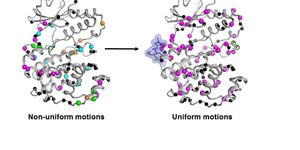Genomic Surgery to Treat Eye Disease
CRISPR is a powerful technique that can make permanent edits to the genome, and scientists are trying to perfect it for use in the clinic to treat patients. Errors in the genetic code can cause serious diseases, which might be repaired instead of trying to ease symptoms. Now researchers have used CRISPR to treat damage in mice that model retinitis pigmentosa, a degenerative disorder of the eye, by repairing the genetic mutation. The method, which replaced a dysfunctional gene with a normal one, has been reported in the journal Ophthalmology.
CRISPR can act as a kind of scissor that cuts the genome, and because cells will act to repair such cuts, a template containing the correct gene can be added to cells along with the CRISPR reagents. The cell machinery can then use the right gene as a template when it fixes the cut portion of the genome. Researcher Stephen H. Tsang, M.D., Ph.D., and his colleagues think of the method as a kind of genomic surgery. Tsang believes they will be able to test their technique on patients within three years.
"Genome surgery is coming," said Dr. Tsang. "Ophthalmology will be the first to see genome surgery before the rest of medicine."
In people with retinitis pigmentosa, cells in their retinas breakdown and are lost. The disease affects about one of 4,000 people. Usually beginning in childhood, night and peripheral vision are impacted at first. As it progresses into adulthood, it will usually cause blindness in patients by the time they turn 40.
In the autosomal dominant form of the disorder, a person inherits one bad copy of the rhodopsin gene from one parent and usually gets a good copy from the other parent. That means that a treatment must selectively target the bad copy. In autosomal recessive cases, two bad copies, one from each parent, have to be inherited to cause the disease.
Tsang’s team focused on correcting the detrimental copy in a strategy to ‘ablate and replace’ which can fix any number of different mutations, instead of focusing on only one. Over 150 different rhodopsin gene mutations can cause the disease, making this tool especially useful.
While the CRISPR tool usually targets one small region of the genome, the team’s design targeted two areas of the rhodopsin gene instead. That increased their ability to disrupt it, from 30 to 90 percent. A viral vector was used to deliver the good replacement copy of the gene to the retina for incorporation into the cells there.
The researchers were also able to use their method to correct sequences in cells that were not dividing, an important feature for therapeutic use.
After testing it on their mouse model, the scientists found that the retinal function improved, and degeneration of the retina was slowed.
The video above from Nature describes and animates some of the many different techniques that are made possible by CRISPR.
Sources: AAAS/Eurekalert! Via American Academy of Ophthalmology, Ophthalmology









